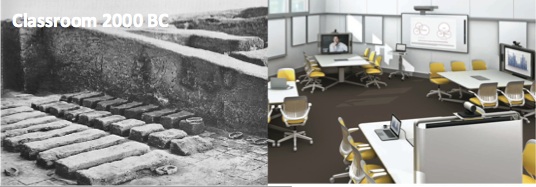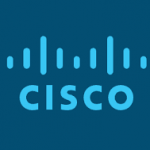
Another busy year of learning
The summer holidays are always a period conducive to meditation and reflection. The world of education evolves very quickly. It is difficult to assimilate fundamental changes, those that will profoundly revolutionize our teaching practices, in the heart of the action, in the midst of the school year. Therefore, the regenerative summer break is the ideal time to calmly review what worked the previous year and what did not work quite as well, to reflect on the causes, to seize the major drivers for change, and to explore new tools and pedagogical practices. In my case, after almost a year at Cisco, it seems important to highlight the questions that deserve more of our attention as educators.
Smart cities and schools
The school board housing inventory is antiquated; consequently, a lot of the energy expended could be reinvested in their modernization. The facilities at the post-secondary level must also adapt to current industry standards. In energy savings alone, it is possible to extract a 20 to 30% margin (for example with Cisco EnergyWise) thus allowing to improve pupil and student experience. Building management offers similar savings opportunities.
At Cisco Canada, we have a very successful global team that is actively involved the world of education (e.g. on the new George Brown campus and on the Carleton University campus). Our VP, Rick Huijbregts, teaches two courses at Harvard this summer. Andy Schonberger has just left Earth Rangers to join our team as an expert consultant in sustainable real estate. We work with architects upstream of the construction project to maximize savings opportunities as well as the intelligence capabilities of construction.
Cisco estimates that, in the next 10 years, the Canadian public sector can recover 92.8 billion dollars in productivity gains and additional revenues (almost twice the amount of our federal budget). A significant share of these profits should come from smart buildings. To this we must add the learning benefits for our students (e.g., sustainable management of the environment, open access to school building data for analysis, programming of the smart environment by students). In addition, certain organizations want to increase their sources of income by offering online courses. Let us invest intelligently to save our money while improving learning and student experience.
Let’s have a conversation about the standard we want to ensure in our schools!
The smart classroom
It is in the classroom that students and teachers spend most of their time. However, this area has not evolved much since Babylon, until now!

Illustration: Collaboration makes its entry into the classroom, after 4,000 years of lecture-style teaching
In my previous post, I gave several suggestions to improve collaboration in the classroom using digital media, namely video. The essential idea is that all of these tools work together to create a simple, smart and reliable experience. It is not just about juxtaposing tools that will add complexity to the teacher’s task, but rather to simplify and automate administrative tasks as much as possible in order to allow them to spend as much time as possible with their students. Finally, it is possible to teach in a delightful way!
For example, Cisco and San Jose State University collaborate to offer what is perhaps the largest range of learning experiences to date. Two videos explain the project, the first from an academic perspective and the second from a technical perspective.
The classroom of the future looks a lot like the offices of the future. At Cisco Canada, we design our own offices, which will become a global showcase for innovation. In fact, Toronto will be one of the four multidimensional Internet innovation centers in the world. We invite you to come visit us as soon as we open our doors in Spring 2015! In the meantime, see how Cisco sees the working world in the 21st century and our latest collaborative tools.
In the next posts, we will explore the concept of smart and connected classroom. Feel free to use the thread below to start the conversation today!



